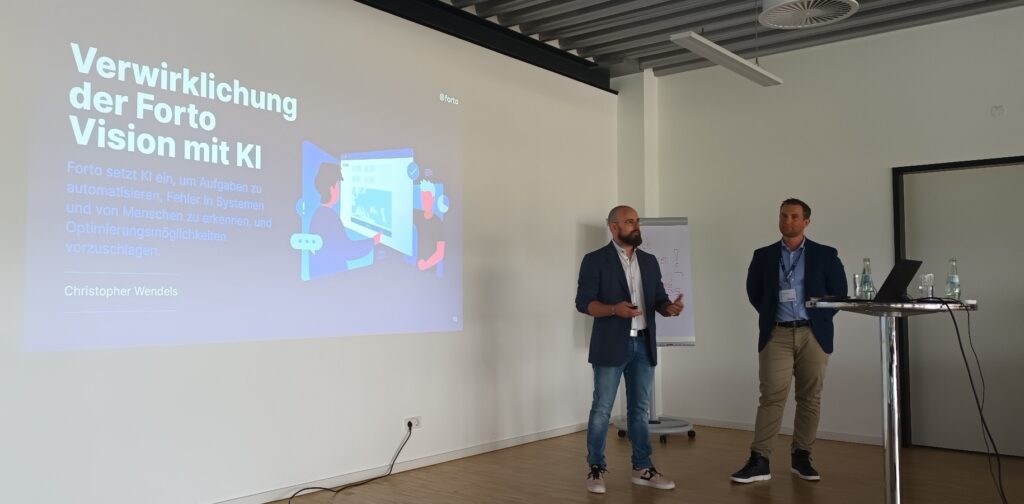-
Crisis-induced transport halt brings major challenges
-
What to consider when switching to other product offerings
-
Reduce complexity of demand planning to be able to act faster
Since 20 April, a breath of everyday life has been wafting through Germany again. Many shops were allowed to open, albeit under different conditions than before the start of the Corona pandemic. A safe distance must be maintained between all persons when shopping, shops have partly adapted their offers to crisis-induced needs (e.g. mouth-nose masks), and mask wearers are now part of the daily cityscape.
For retailers, the reopening of shops means having important articles in stock, as well as planning and placing orders for the needs customers will have in two to three months. This is not easy, because nobody knows what is coming, which articles are in particular demand now and will be in demand in the coming period and whether manufacturers will be able to deliver those in-demand goods on time. Flexibility is therefore required, for example to import goods more quickly when the market requires alternative manufacturers if there are supply bottlenecks at traditional manufacturers, as well as to quickly set up new supply chains for alternative products such as respirators.
Tracking time-critical goods with digital tools
The interruption of the production and supply chains as a result of Covid-19 has upset the usual flow of goods, as well as the collection cycles. Many stores must now quickly order time-critical goods, such as the current summer collections, and/or fill gaps caused by production downtime.
These supply chain disruptions can be remedied with the right tools:
- Collaboration with suppliers in one system: To stay informed about the latest updates in production, it’s advisable to work directly in one system with suppliers and also transport partners. In this way, errors that occur manually can be directly avoided and communication efforts can be reduced to a minimum.
- Choosing the right means of transport: If the articles are needed as quickly as possible, transport by air freight is recommended. To obtain immediate freight rates and find the best offer, the use of a digital booking platform is recommended. Should it be necessary to switch to a slower means of transport when transporting goods, for example because the warehouses are still too full, this can also be done easily with the help of a digital platform.
- Shipment tracking and delivery planning in real time: Both for personnel planning at the warehouse and for campaign planning in sales, it’s necessary to know the exact time the goods will be delivered. If you rely on technological partners for this, you will benefit from having an overview of your shipments at all times.
Competitive advantages through having a single source of truth
A digital solution for the entire supply chain (i.e. a single source of truth) gives companies numerous competitive advantages, especially in uncertain times: All parties involved in order management — all shops in a chain of shops, as well as all suppliers and manufacturers — can access the digital platform and enter status updates, so that an overview of the manufacturing and delivery process is always available to all. There is only one source of truth (the digital platform) and not numerous manually-managed lists that have to be merged. The error rate in the order management process is reduced and transparency is fully enabled.
Each shop in a chain can also directly manage the inventory in a shop and warehouse through an interface with the company’s internal ERP system. In this way it’s possible to see at a glance which goods are in stock throughout Germany. In the same way, orders can be easily compared with actual deliveries. It’s easy to see where there are difficulties. At the beginning of the Covid-19 pandemic, for example, many retailers only received partial orders because manufacturers were unable to produce goods in sufficient quantities. Quality and quantity checks that are integrated into a digital solution immediately highlight such problems and give you the opportunity/time to find alternative solutions — whether you prioritize other deliveries of goods or find another manufacturer for the desired products.
Exceptional times require exceptional planning
In times like these, it is natural for many companies to switch to the production of urgently needed goods. This requires the establishment of completely new supply chains. If one plans to import certain items such as medical protective clothing (mouth-nose masks etc.) and medical equipment, there are many regulations that must be complied with. Restructuring the manufacturer and supplier portfolio, as well as bringing them on board, is no easy task either.
Forto is happy to help you establish contacts with certified suppliers of medical goods, as well as help with transport planning, because often there are hard deadlines (for example, with the state government, charities, clinics etc.) when the items have to be on site.
Digitization of the entire supply chain at product level
Now is the right time to switch to digital order management, which, among other things, allows manufacturers and suppliers to be contacted quickly, to reorder articles when there is more demand for them, and to divert them to another transport route if necessary (for example, from the slower sea freight to the faster air freight).
Due to the temporary slump in demand on the consumer side, calculating the demand for the coming period is one of the biggest challenges in logistics. Orders for late summer are usually placed now. A digital order management solution gives you full access to data on your production performance and average transit times, allowing you to predict future orders now.
Learning for the future
Learning from the Corona crisis means taking precautions for the future. This means, for example, finding alternative manufacturers of articles now and also keeping an eye on major distortions (e.g. border closures, airport congestion, etc.). A digital solution ensures that companies can proactively identify problems and act quickly on alternatives instead of just reacting and possibly losing lots of time and money. The management consultancy McKinsey also advises companies to plan for these and other risks in the supply chain in order to be prepared for the future.
Want to minimize the risks in your supply chain?
Then learn more about the advantages of our modern order management solution FortoX. With Forto’s order management solution, you have all risks constantly in view and are not only on the safe side in the next crisis, but also have the opportunity to continuously optimise your supply chain based on data.
For more information, please contact us here or get in touch with your responsible Forto customer consultant.







